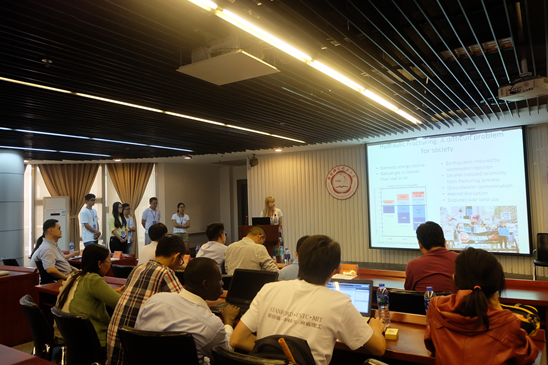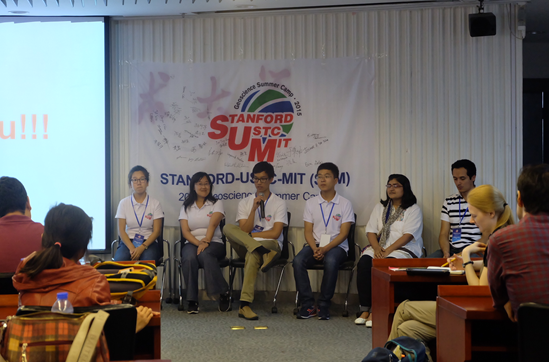On Sept 12nd, SUMers—PhD students and Postdocs come from Stanford, MIT and USTC—finished their geological exploration in Yellow mountain, and this trip not only provided a way for them to practice their knowledge in daily life, but also promoted the communications among different geoscience disciplines. They were assigned to a more challenging task: Sumers were divided into six groups, each group consists students from different universities, and they had to give a 10 minutes presentation about the topic related to geoscience, especially with our life, besides that, they also needed to discuss the selected topic with the other SUMers and professors from the Earth and Space Science department of USTC.

The 1st group was concerning about monitoring the mobile earth, including collecting and analyzing the data which is about predicting the structure change of earth from different dimensional, they also refered the application of 3D geological model in the near future.
Wenchuan earthquake happened in 2008 was a great disaster for all Chinese people, and this alerted the 2nd group that the accurate prediction of earthquake is of particularly importance. They also discussed about the varied building structure adopted by different regions to anti-earthquake.
On the basis of China owns the largest recoverable shale gas in the world, group 3 was considering about the shale gas fracking’s impact on earthquakes. Group 4 was mainly talking about the cause and hazard of the sea level rise, besides, they also put forward the actions we should carry out to prevent this calamity. Students of Group 5 were quite interested in the fog haze issue, which haunts people in big cities such as Beijing, they explored the compositions and sources of fog haze and figure out some solutions that may smooth this stressing situation.

Solar flare is a sudden release of energy of the sun and it could influence all the layers of the solar atmosphere, and the solar energetic particles will hit the sun which will cause catastrophic consequences on earth, which means that the electronic devices and communications such as cell phones, laptops that we rely on heavily in daily activities will be out of work. Group 6 illustrated the physical mechanism of solar flare and the disasters it may bring with.

This series of SUM activities not only promotes the collaboration between the universities, but also provides a platform for the students to exchange ideas and discuss the foremost research topics. XU Mengjiao, a SUMer from USTC, appreciates that SUM provides such a great forum for students from different research background to work together, besides, she is very impressed by the spirit of assiduous study that reflects on students from USTC and MIT and she hopes that more and more students could be involved in diversified learning programs.
(REN Muqing, USTC News Center, photo by a SUM volunteer)